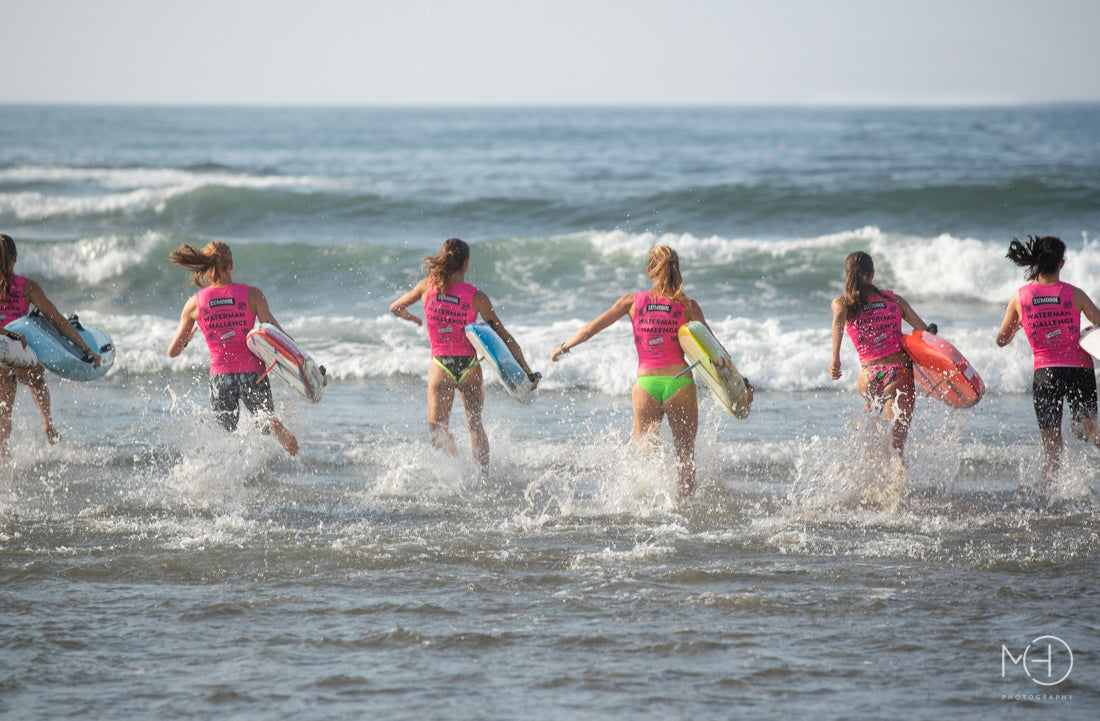
Legs in Rescue, the basis of success.
Share
It has long been known that leg action is important in competitive lifesaving , providing balance and good body position that minimises drag. What is less clear is the propulsive potential of the legs (if any), and the training that would need to be undertaken to achieve world-class swimming speeds. It is no coincidence that most of the best swimmers are also the best in legs.
Optimal training in rescue
Recent observations of elite swimmers and the volume and intensity of legwork in their training have suggested a review of the recommendations on the quality and quantity of legwork for success at the highest level. Although many clubs suffer from limitations in training hours, coaches should include legwork in every session ; unfortunately, in most clubs neither the necessary amount nor intensity of legwork is being done. If we look at American or Australian swimmers, we see that they do 2000 or 3000 metres of legwork in every session, including some sprints or hard tempo sets. There are many impressive examples of legwork around the world, including an American university team that regularly does 20x100 legs every 1'50” with an average of less than 1'30”…
It is clear that the leg times achieved by swimmers such as Ian Thorpe, Michael Phelps, Ian Crocker, Aaron Peirsol and Simon Burnett himself or Caitlin McClatchley are an important contribution to their status as the fastest swimmers on the planet. The information collected from these swimmers, from some of the training sessions proposed by
elite coaches and our own observations with the 200 elite swimmers working at the National Centre in Loughborough, form the basis of this article.
The contribution of the legs in the tests
A simple analysis of typical 100m and 200m events suggests that up to 30% of the event can be swum underwater (2x15m in 100m events, 4x15m in 200m events). Although this feature is often underutilised, the best swimmers perform a strong and rapid dolphin kick for much of the event; this way they achieve a good body position “on” the water, reducing drag and improving swimming speed. The legs also allow for improved balance in the stroke , helping to improve body position and glide through the water. If good leg work is not done in each session, this will not happen.
Leg technique
To perform a strong and explosive leg kick, there are a few factors to develop:

- The ankles and hips need to be extremely flexible – improving this aspect can be done by specific stretches before and after each training session.
- The hip flexors, glutes, quads and calves must be very strong and specifically conditioned with proper swimming technique.
- Dry conditioning (including running) can be a good resource to use.
- The leg action must be fast and rhythmic, which can only be achieved through continued practice in the water .
- The best dolphin swimmers manage to start the upstroke almost before the downstroke has finished. Fins can help with this, but swimmers should not be too dependent on them.
- The volume and intensity of leg work should be progressively increased from an early age (10-13 years), working on both the technique and the conditioning of the simultaneous and alternate kick; one should not be afraid of increasing the volume of leg work performed at an early age.
- It requires a minimum of 3 butterfly strokes when exiting each turn; in the case of backstroke and butterfly, the recommended number of strokes is 5 .
While there are many things to consider in developing a good leg kick, there are also a number of things to avoid. Common mistakes in leg kick technique include:

Leg training
In this section, we propose some examples of leg sets , alternative methods for leg training, recommended times for older swimmers and some general recommendations to improve this part of the training.
The way to condition the legs should be
similar to that used in other aspects of training, as it is governed by
the same training principles as in other sections of the planning.
In order to be able to evaluate the physiological effect in a similar way to swimming, it must be
set a maximum heart rate for leg work. Although
will vary between each swimmer, typically it can be set as 25 beats below the full swim .
Once this maximum leg heart rate is established, the sets
They can be monitored and compared using the typical prescription method of
training based on maximum heart rate.
Session type: aerobic maintenance or threshold
| Series | Rep | Dist | Desc | Comments | Total | |
| 300 | c/6'15” | 30-40 bpm | ||||
| 1 | 3x | 1x | 200 | c/4'30” | 6” less than the 200 pass | 1800 m |
| 100 | c/2'15” | 4” less than the 100 pass | ||||
| 1x | 200 | c/3'50/3'40/3'30 | 30 bpm | 1500 m | ||
| 150 | c/2'50/2'45/2'40 | |||||
| 2 | 3x | 100 | c/1'55/1'50/1'45 | |||
| 50 | c/ 60/55/60 | |||||
| 5x | 100 | c/90 | ||||
| 3 | 2x | 4x | 200 | 4 c/4'30 4 c/4'15 | Progress from 1 to 4 Maintain from 5 to 8 | 1600 m |
Session Type: Overload aerobic / Maximum aerobic consumption
| Series | Rep | Dist | Desc | Comments | Total | |
| 1 | 1x | 12x | 100 | c/2'30 | "Better average" Maximum uniform effort | 1200 m |
| 2 | 1x | 6-8x | 200 | c/5' | "Better average" Maximum uniform effort | 1200-1600 m |
| 3 | 1x | 3x | 400 | c/8'30 | "Better average" Maximum uniform effort | 1200 m |
Session type: Glycolytic (lactic acid)
| Series | Rep | Dist | Desc | Comments | Total | |
| 1 | 2x | 6x | 50 | c/2'00 | Maximum effort from the beginning | 600 m |
| 2 | 1x | 8x | 75 | c/2'45 | Maximum effort from the beginning | 600 m |
| 1x | 100 | c/3'15 | ||||
| 3 | 3x | 1x | 75 | c/2'30 | Maximum effort from start | 675 m |
| 1x | 50 | c/2' |
Session type: speed
| Series | Rep | Dist | Rest | Comments | Total | |
| 1 | 2x | 8x | 25 legs 200 swim | c/45 | Maximum effort with/without fins 1 dive / 1 surface | 400 m |
| 2 | 2x | 12x | 50 | c/90 | Maxima speed 15 m Recovery to the end from 50 | 360 m |
| 3 | 6x | 2x 1x 2x | 25x 50x 25x | c/45 c/75 c/45 | 1 maximum ventral – 1 easy 8 maximum shakes in each impulse 1 maximum dive – 1 easy | Approx. 450 m |
Work recovery of legs
Leg kicks can be a useful method of aiding recovery. Using a kickboard, swimmers can breathe freely allowing for good gas exchange and oxygenation necessary for metabolic processes. In addition, the use of large muscle groups will promote circulation and oxidation of lactate from the bloodstream. In many ways, the contrast between intense swimming and calm leg kicking can be beneficial in recovery.
Level in legs
The best test to assess leg level is perhaps to choose a typical block of work and note down the average times for comparison. Completing this series (or similar) every month will provide a useful tool for monitoring progress. The following example shows some recommended leg level guidelines.
Other considerations – Planning, implementation point and competition
For a younger swimmer, there might be up to 6 hard sessions, whereas for older swimmers, the hard sessions might be 4. In many cases, the leg sets will also vary the intensity of the rest of the session. For example, a training session might be recovery but with some hard leg sets. Likewise, a hard swim set might be followed by recovery leg work.
During the taper, as the swim volume and intensity decrease, leg sets should be progressively reduced, although not eliminated completely. The work should be reduced in volume and intensity during the 2-5 week taper period.
Performing a high volume of quality leg work on a regular basis will allow swimmers to have more confidence to endure the last sections of the competition , especially in close finishes. Excessive support in the kick during the first sections must be avoided, since it will make it difficult to maintain the rhythm in the final part, causing a possible loss of body position and, therefore, speed. Likewise, a correct balance between the kick and the cycle frequency is very important. The relationship between the propulsion obtained with the legs and the cycle frequency is closely related.

Summary and conclusion
The importance of the legs to achieving optimal performance cannot be underestimated . The need to spend a significant amount of time and effort in training to condition the legs and improve kicking technique should not be underestimated. The suggested levels for achieving great leg fitness are up to date and will continue to advance as knowledge on different training methods improves.
Michael Phelps recently said after breaking the world record in the 200m butterfly with 1'52"09: " A big part of my training is focused on the underwater wave stroke and I know that the more I work my legs the faster I can swim. Coming out of the turn quickly when the others are already tired is a great resource "
If legwork is important for one of the best swimmers in the world, then perhaps we should take it into account. Surely, the content of this article will give coaches and swimmers some suggestions to improve the programs that allow their swimmers to improve their leg performance.
Source: © Mike Peyrebrune and Ian Turner 2007 Translation: Santiago Veiga .

